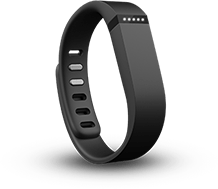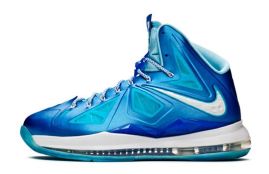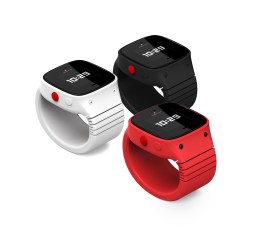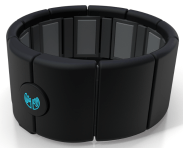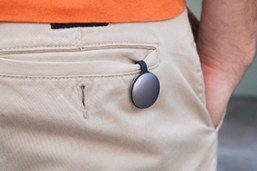
Marc Benioff and Larry Ellison, the CEOs of two of the more powerful enterprise companies in the world — Salesforce.com and Oracle — are not known to be the chummiest of pals. Before this week's sudden peaceful truce, which will see the two companies integrate their cloud services, the only clouds that connected the two were dark and frowny ones. For years, the two have pitted themselves and their companies against each other in brinkmanship-style competition, while chasing similar acquisitions and similar strategies just to stay within sight of each other.
It was popcorn-munching fodder, as their sparring often took on a decidedly personal, catfight-style spin. To wit: Just two years ago, Oracle cancelled Benioff's high-priced keynote talk at its OpenWorld Conference in San Francisco at the last minute, precipitating a back and forth between the two CEOs. Benioff wasn't invited back in 2012.
While the personality-led public spats often seemed more like desperate grabs for publicity and attention than anything else, the Oracle-Salesforce feud can be boiled down to a much more interesting (and fundamental) conflict: Which company or model (if either) represents the "true cloud" — present and future. In reality, that comes down to not only who has been able to win over enterprises with their respective service suites in the sky in the past — but who's got the best shot at doing that tomorrow … or in 2025?
False clouds and true love
Leading up to this denouement, Benioff rarely missed an opportunity to criticize Oracle's philosophy, focusing on its Exadata system, which the Salesforce CEO called "the false cloud" (a term he used consistently over the years). His opinion: Oracle's direction failed to show a critical understanding of what enterprise customers really want (and need) in the modern world of cloud computing. Benioff has long been outspoken about the fact that IT companies must embrace consumerization and the "social revolution" if they hope to survive. That manifested, in part, in Salesforce's integration with Facebook and acquisitions of a number of social-marketing and social-productivity services, like Buddy Media, Radian6 and Rypple, among others.
In turn, Ellison has said that Salesforce.com, in fact, "isn't a real cloud company," because it was "applications-only, rather than apps backed by that all-important cloud infrastructure," as we wrote at the time. Of course, Oracle has worked hard to become much more than a partial cloud, with the virtualization tech and an end-to-end stack that one traditionally associates with a "true" cloud-computing company. Salesforce, in reality, Ellison had said, was actually just an "itty bitty application" running on Oracle's infrastructure.
Sure, Ellison and Benioff sparring over "whose cloud is bigger" doesn't quite have the same pugilistic feel of a real war, but, for good reason, the two companies have long been referred to as enemies. That's why the news this week that Oracle and Salesforce are putting aside their differences to embrace in a nine-year partnership, covering applications, platform and infrastructure over the next nine years, came as somewhat of a shock.
Besties or frenemies?
The truth is that Benioff and Ellison have known each other for a long time. Larry Ellison was Marc Benioff's mentor when he was an eager executive at Oracle — for 13 years, mind you, in which he became Oracle's youngest VP — before he took off to found Salesforce. Back in the day, InformationWeek described Benioff's presence onstage at an Oracle conference a decade ago as Ellison-esque.
In fact, the Oracle CEO went on to help get Salesforce.com off the ground as an early investor, and Salesforce has been a big customer of Oracle's over the years.
When did it go wrong? Some have said that the feud that broke out officially in 2011 could be attributed to Benioff's drive to be taken seriously by his former boss, mentor and investor — in short, he had something to prove.
While sensitive, city-sized egos have no doubt been partly to blame; on the other hand, as Arik Hesseldahl pointed out last year, again, the real issue at hand has been the very definition of cloud computing. On this issue, the two CEOs routinely went their separate ways.
For Benioff, the cloud has been something that can't be owned or packaged, because it is a fundamental part of the web itself, which consumers never really interact with or touch on a daily basis. Salesforce.com was designed to bring massive data centers and cloud computing to users through the familiar window of their browsers — they just need an Internet connection or a web-connected device to use it. Benioff's "cloud" is defined by services like Facebook, or AWS, or Google Apps, where customers have a wide range of tools at their fingertips without having to worry about what's going on behind the scenes. They don't have to install anything, manage a ton of moving parts, worry about upgrades (and so on), and they pay for what they use.
But for the Oracle CEO, the cloud has been more of a hybrid, one that caters in part to enterprise organizations that don't want third parties handling their data or operations or physical assets. Really, it's the old world of enterprise software, with a mess of modern tech — a world where Oracle, traditionally, has hardly been alone.
Of course, Benioff has been a broken record on this point, believing that this kind of cloud is going the way of the dinosaur, that Oracle-style hardware will be replaced by the distributed, omniscient Internet-powered cloud.
So why the change of heart? It seems that at least part of it has to do with growing up: The two companies share a long list of mutual customers. "Salesforce is a big company now," Ellison said proudly in front of his former pupil and new bestie. "Companies expect us to work together professionally toward their mutual benefit."
And Ellison noted on a conference call around the news, "We don't want each and every one of those customers having to hire a third party or having to spend a lot of money to wire up the Salesforce applications to the Oracle applications."
Benioff added that it was "an easy commitment" for both companies to make and that there was "no company" he'd rather "partner with to be the heart of Salesforce's database infrastructure." Not only that, but he gushed that the potential opportunities that could result from the partnership were "endless," and that they would be hosting more joint conference calls in the future.
Rivals waiting in the wings
The reality of it, however, is that on some level the two companies need each other. While Salesforce has nailed the idea of cloud services, its bread and butter remain as its name says — focused on sales teams and mobilizing them. On top of that, Salesforce's cloud mantra, even if it is the way everything seems to be moving, is still far from ubiquitous, particularly for large enterprises. By contrast, Oracle, has the larger remit with the verticals it targets, and it also has the credibility for premise-based software solutions, but perhaps has not managed to pin down that cloud element in quite as strong a way as Salesforce has.
That speaks to a sort of symbiosis: Salesforce will become an official internal user of Oracle's financial and HR apps; Oracle will begin integrating Salesforce into its infrastructure, using its newly acquired companies using Salesforce to help it find the best ways to integrate. Down the road, the idea is to allow customers to just flip a switch to enable usage of either company's apps. And as Read Write alluded to yesterday, this alliance will also help Oracle crack further into big data technologies like Hadoop and NoSQL, which may compete, but more likely complement the relational databases upon which Oracle's business is built.
This also points to another way that a partnership between these two giants makes sense: if it's the new wave of enterprise startups that are creating the most disruptive effects in the industry, with large enterprises increasingly opting for hybrid solutions from a selection of these emerging companies, Ellison and Benioff coming together to present an even more formidable OracleForce will make it difficult for would-be rivals to compete.
To that end, it will be interesting to see if this does indeed usher in a "third wave of computing" as Benioff terms it, in which big companies and rivals like Oracle and Salesforce (and Microsoft, who had Oracle news of its own this week) are forced to come together if they hope to produce the kind of value and flexibility of choice that customers have begun to demand from their infrastructure — the kind of value that smaller competitors may be more agile and able to achieve. This argument is made most persuasively by Aaron Levie, co-founder of Box (yes, one of those nipping at the big guys' toes), who writes about the rise of the cloud stack.
Herein also lies the challenge for the two: whether they can really get their big arses in sync to work together to meet those new enterprise demands.
Some are very cynical that this latest move demonstrates that they can. Carter Lusher, chief IT analyst at Ovum, believes that "nothing in the announcement amounted to a significant change in either company's strategy."
"This is a very minor announcement, just above 'press releaseware' because of the lack of detail provided," he writes in a research note, citing the lack of detail on how and when platform migrations will take place, or what companies will get displaced in the process, or when they will hit the market with these new solutions. "It is Ovum's opinion that this announcement neither shifts the dynamics of the IT industry nor should it change any IT organization's IT strategy or procurement plans," he concludes.
Still, there's time to see how the practicalities play out. In the interim, let's see whether regulators have anything to say on this deal.
































